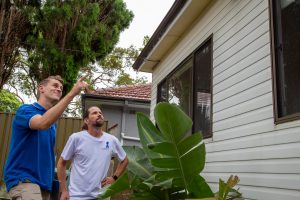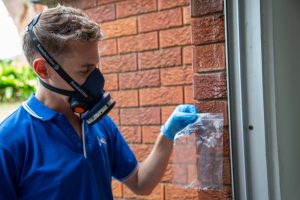Important Facts
- Asbestos was widely used in the manufacture of building materials and other products prior to being phased out by 1990 and banned in 2003.
- If your home was built or renovated prior to 1987 it is ‘highly likely’ that it contains products incorporating asbestos.
- If your home was built or renovated between 1987 and 1990 it is ‘likely’ that it may contain some asbestos-containing materials.
- If your home was built or renovated after 1990 it is ‘unlikely’ that asbestos-containing materials will be present.
- Most people can’t tell whether building materials contain asbestos just by looking at them

- Thousands of products were made from bonded asbestos cement included fibro sheeting (flat and corrugated), water, drainage and flue pipes, roofing shingles and guttering
- Asbestos fibres were used in the manufacture of thousands of products including decorator materials such as carpet underlay, wall and floor tiles; adhesives including mastics, putty, sealants, plasters and paints; bituminous membranes for waterproofing rooftops and floors; and, bituminous electrical products including backing boards in switchboards and electrical insulation. For information on the sorts of products that can be found in homes built or renovated prior to 1990, search our Asbestos Product Database
- Unless you take the required safety precautions and follow regulations, Don’t cut it! Don’t drill it! Don’t drop it! Don’t sand it! Don’t saw it! Don’t scrape it! Don’t scrub it! Don’t dismantle it! Don’t tip it! Don’t waterblast it! Don’t demolish it! And whatever you do… Don’t dump it!
- If you do need to work with any material that may contain asbestos, always work so there is minimal dust or small particles released from the asbestos materials and follow the regulations. See Fact Sheet 2-Detailed Asbestos Management for instructions.
-

Only scientific testing of a sample of material by an accredited National Association of Testing Authorities (NATA) asbestos testing laboratory can confirm the presence of asbestos. For information on testing and accredited laboratories in your area call 1800 621 666 or refer to their website at www.nata.com.au. When searching for an asbestos testing facility use a capital A in Asbestos.
- Asbestos materials that are in good condition are unlikely to release asbestos fibres if left undisturbed
- If asbestos materials are in good condition, paint them and leave them alone
The use of asbestos in products has been banned since 2003 - For important information about working with asbestos read Safe Work Australia’s Model Code of Practice: How to safely remove asbestos July 2020.
- Asbestos — A guide for householders and the general public has been produced by The Department of Health to provide useful information to enable householders to sensibly and safely manage the risks arising from any occasional encounters with asbestos materials in and around their homes
- Asbestos Awareness have produced a number of Fact Sheets on how to safely manage asbestos in your home
Share this information on:

